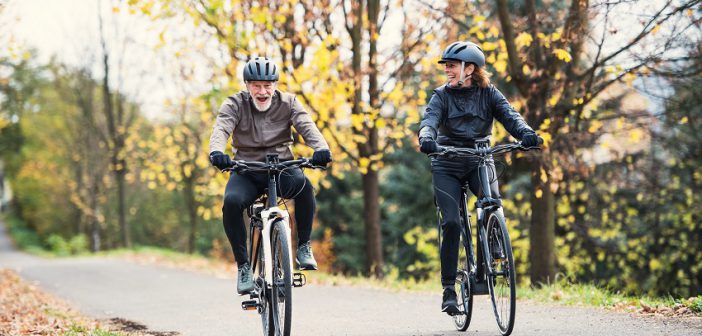Mountain biking can take you on adventures. You experience the outdoors in a whole new way, and it can keep you healthy and improve your mental well-being all at the same time. But, if you’ve only ever experienced riding by renting or borrowing a bike, then maybe it’s time to invest in a mountain bike for yourself. Two significant options to understand first are the differences between a hardtail bike and a full-suspension bike.
If you’re in the market for a new mountain bike, then you’ll know there are a lot of options out there. You’ll also notice that these aren’t a purchase that should be made on a whim. They have a reasonable-sized price tag, and we know you want to get the most for your money, so try to think of them as more of an investment. The first step to getting this right is knowing what suspension will be best for your personal riding needs.
A full-suspension bike is equipped with a rear shock system as well as the suspension on the front. On the other hand, hardtail bikes get their name because they do not feature rear shocks, just the front; the back wheel is attached directly to the frame, giving it a hardtail backend.
When it comes to mountain bikes, the suspension is crucial, and choosing the right one can make a difference in what type of experience you have.
The History of Mountain Bikes
It may feel like mountain bikes have been around forever. Still, in all actuality, they’ve only been a part of our outdoor activities list since the 1970s. Even then, they didn’t start resembling what we would call a mountain bike until the 1980s. Then, in the mid to late 80s, they began creating bikes with more advanced materials, often borrowing from the popular BMX world.
Mountain biking blew up in the 1990s, and as the popularity grew, so did the variety. Unfortunately, it wasn’t until then that suspensions on mountain bikes were even available.
Affordability and Learning Curve
Hardtail mountain bikes are, in general, significantly more affordable than their full-suspension counterparts. So, if you’re working with a budget, this is something you might want to take into consideration when you are choosing between the two options.
Hardtail bikes are also the top pick for those who are just getting started on mountain bikes. One of the reasons for this is that because there is no rear suspension there to give the impression of a smooth ride, the rider has to navigate the terrain better.
It also teaches the new rider how to use their legs to provide suspension. In addition, a hardtail mountain bike will also make a novice rider go slower than someone learning on a full-suspension bike. If they go full speed, the ride will be rough and uncomfortable.
The Type of Trail You Ride
The kind of trails you plan to ride is another thing to consider when picking the right suspension style of bike. For example, these days, mountain biking trails are often very well-groomed and smooth. So even if they are a challenging ride, you may not need a full-suspension bike to have the most comfortable experience.
On the other hand, if all the trails you plan to ride are the most extreme and haven’t been well-groomed, you might be more comfortable with a full-suspension bike.
The weather can make a difference as well. If you plan to do much riding in the winter or during the muddy seasons, you’re going to want to consider going with a hardtail. They are better designed to handle things like mud and wet without damage to the bike. In addition, they don’t have the same areas to collect grime that full-suspension bikes do and can be sprayed off after riding in the mud.
If you’re riding a bunch of climbing-style trails, a hardtail bike is the way to go. Because of how they are designed, you are getting the maximum efficiency out of every pedal pump. They also weigh significantly less than a full-suspension bike. That’s why most riders who race choose this option.
Maintenance and Care
Maintaining and taking proper care of your mountain bike can be time-consuming and expensive. Another advantage that hardtail bikes have over their full-suspension counterparts is a much lower level of maintenance.
It comes down to how many moving pieces the puzzle has. Suspensions should be maintained yearly to ensure they stay in the highest working condition, and hardtails only have one.
There are also fewer moving pieces on a hardtail bike, so there are fewer places where things can go wrong. Anytime you have moving parts, there is potential for trouble. Limiting that can help ensure you spend more time riding and less time fixing.
Flexibility
Complete suspension bikes aren’t designed to do more than trail riding. Though people have been known to attempt it, this is an area where the hardtail bike shines.
Hardtail bikes do just fine on asphalt. If necessary, you can even use a hardtail to ride to work almost as efficiently as a bike designed for the task. Usually, you can make a couple of minor changes like the type of tires or the amount of air in them and use the hardtail bike for whatever it is you need.
The frames are also significantly lighter than full-suspension bikes, so they might be the perfect choice for trail riders who also like to travel with their bike
Is a Hardtail Bike Right for You?
There are numerous things to consider before you make your final decision. Still, if you’re looking for a bike that offers you a budget-friendly way to get into the mountain biking lifestyle, then hardtail bikes can be the best place to dip your toes into the water.




